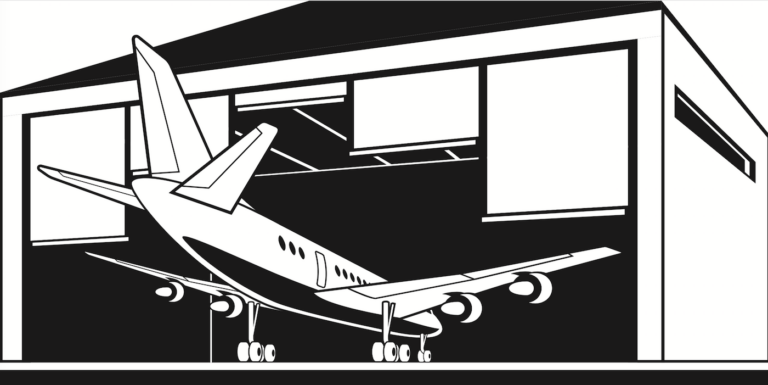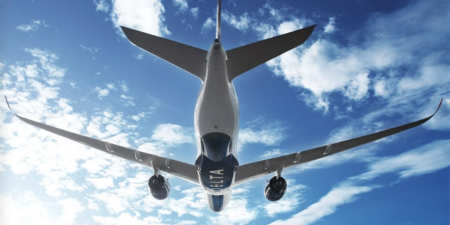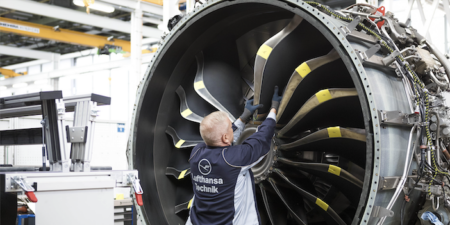In 2019, global fleet and maintenance, repair and overhaul (MRO) markets will see dynamic growth as the demand for air travel rises. Alongside this, organizations will have to deal with fluctuating oil prices, labor skills shortage and newer, complex assets entering service. So just how will they cope in this competitive market environment? Three developments can be targeted that will enable operators and MRO commercial aviation companies to take advantage of these growth opportunities in 2019.
Prediction one: Reliability analysis becomes the engine for growth of predictive capabilities
Reliability data buys operators decision-making time
A recent IFS study into the top commercial aviation pain points found operational availability to be the greatest challenge, cited by 60% of respondents. No matter how quickly operators can turn around a plane between flights, the disruption of having an aircraft on the ground (AOG) has drastic ramifications, with parts and time potentially costing millions of dollars. Improving operational availability and avoiding costly schedule delays must begin in the maintenance planning process.
The solution lies in analyzing reliability data, which can enable operators to accurately predict when a component will fail and give them more time and freedom to decide on the next step. If operators know when a part is likely to malfunction or break, they can get as much as two to three weeks to review options and source a replacement from the most cost-effective vendor. This removes the pressure to find a part at short notice, which often leads to cascading maintenance schedule changes and expensive emergency parts sourcing.
MROs can also capture valuable reliability data
Last year, IFS predicted that digital twins would play a bigger role in commercial aviation and we have seen this materialize and continue to dominate the agenda across the industry. In 2019, we will see MROs take advantage of digital twin information gained from original equipment manufacturers (OEMs) to capture much of this valuable reliability data.
During the manufacturing process, sensors on machinery send signals to the twin to gauge operational performance, product characteristics and environmental conditions within the factory. When this is combined with organizational information such as data and user rights, and third-party data on weather forecasts, historical intelligence and flight schedules, the digital twin is able to run analyses to spot patterns signaling sub-optimal conditions.
When MROs see this data, they can better understand how assets are used in the field, how long-lead-time components improve product performance and where data can be used to open new revenue streams.
It is important to note that some improvements pay off better than others. Take the essential fuel pump for example – expensive to produce and with a long repair time. Focusing analytical capabilities on this area will deliver more efficiencies and cost savings than elsewhere. The key for MROs is to identify the areas where reliability data can have the most disruptive effect. Any improvement that will allow an MRO to enhance or gain predictive capabilities is going to be a major service differentiator.
In 2019, both operators and MROs will double down on their efforts to make data count towards predictive capabilities—and these capabilities will stretch further than ever before.
Prediction two: Quicker deployment of in-air and in-hangar innovation
For operators, the only way is cloud
Operators face unprecedented demand to innovate faster, which usually manifests in pressure to adopt new technologies that improve the passenger experience, from in-flight entertainment systems to the latest avionics. Yet these new tools and functionalities often take too long to approve and integrate – so much so that aviation is lagging other industries in speed of innovation.
This innovation dilemma is down to several factors, including regulatory constraints, but is often due to the fact that archaic processes are still widespread across the operator ecosystem. Paper is still prevalent in a lot of maintenance hangars, RFPs for new projects themselves are extremely old fashioned in their construction, and personnel are still taken out of operations to conduct classroom-style training sessions.
Instead of pointing the finger at OEMs, regulators and the industry as whole, operators can get a head-start on innovation by looking within. Cloud software will be a necessary tool in the new aviation IT landscape to speed up the delivery of new capabilities and eliminate the cost of purchasing and managing on-premise technology. Software-as-a-Service will remain a primary model for this.
In 2019, we’ll see commercial operators connect more areas of the enterprise to the cloud to deploy new technologies faster and drive efficiencies through successful digitization and supply chain optimization.
Mobile customer service: MROs must manage maintenance expectations
In 2019, MROs will face increased competition from OEMs moving into aftermarket services. Unlike most OEMs and operators, maintenance is the main skillset of an MRO, and this gives them a head-start when it comes to being flexible, but they are also afflicted by paper-based processes and regulatory pressures.
When it comes to innovation, MROs will need to demonstrate their capabilities through customer value. This means looking for new ways to use technology to deliver a better service and overcome distance challenges. Moving maintenance visibility beyond the boundaries of the MRO organization and in front of the customer is a good place to start.
Mobile devices are an indispensable part of this. MROs can make accurate maintenance status reports instantly available through mobile-enabled customer portals, and customers will directly benefit from better visibility into key metrics such as turnaround time to help with flight scheduling.
In 2019, the MROs who prioritise innovative service will take the step from technology laggard to leader and can develop a key service differentiator in an ultra-competitive climate.
Prediction three: Companies put talent and knowledge first, putting robots aside
One-to-many knowledge transfer now a reality for operators—virtual or augmented!
Labor costs are the second-largest operating expense for airlines after fuel costs. Robots will not replace engineers and professionals in 2019 and the labor force is quickly aging, so there needs to be a better way to aid human labor and help an ever-increasing number of people travel seamlessly. This means operators have a responsibility to ensure workers have all the knowledge, tools and support currently available.
Knowledge transfer – the capability to capture knowledge from a small pool of subject matter experts and disseminate it across the enterprise – is going to be key in 2019. It is an area that has benefited from significant developments in commercial software tools over recent years.
In the short-term, point solutions, such as augmented reality, are coming to the fore. IFS is already working to deliver IFS Applications on Microsoft HoloLens headsets, which supports real-time one-to-many knowledge transfer from experienced technicians to newer recruits. Looking longer-term, incorporating asset history into maintenance support systems will ensure that lessons learned stay learned and component history can be tracked.
Using technology for one-to-many knowledge transfer will make it simpler for new recruits to learn, receive on-the-job training and get to grips with new and complex assets much more easily.
MROs: Get involved – it’s your future
Aviation maintenance technician (AMT) demand is higher than supply. In 2019, MROs need to start to rebalance this by opening the door to both new opportunities and emerging technologies.
Apprenticeships and agreements with universities and technical colleges can give fresh momentum to the industry. Such training programs are already taking off across Europe and Asia, with some degree apprenticeships providing students the opportunity to earn a degree and work in the field at the same time. In the US, there are a few early examples of academia and industry coming together to help aircraft technicians fast-track their career, and in 2019 we will see the industry push on to strengthen this trend.
But MROs need to go further than just putting new recruitment programmes in place – they need to dial up their digitization efforts too, so that younger, digitally native, workers and apprentices can use the technologies they take for granted in their personal lives. Taking a more experienced team member on a journey from paper to desk computer will manifest a productivity boost, but equally, taking a younger recruit away from mobile technology and putting them in front of a computer screen is a major step backwards.
When mobility is allowed to play a key part of the workplace experience, the consequence is what I call an innovation spillover. One such spillover would be the visualization of technical records, making vital information available through mobile platforms or augmented reality tools for people to access whenever and wherever they might need it.
In 2019, the best approach MROs can take to tackle the AMT shortage is to join forces with academia to help talent enter the industry and cultivate a technologically-driven workplace culture to help train and retain them.
Keeping aircraft flying and customers happy
2019 will be a critical year for the aviation industry to improve the operational efficiencies that have a real impact on the quality and speed of service, go-to-market time, scheduling, maintenance and training. This means reliability analysis, customer portals, more responsive maintenance capabilities and a tech-driven approach to knowledge transfer and recruiting will be essential to keep aircraft flying and customers happy.
About the author
 Mark Martin is director, operator edition product line of the aerospace & defense business unit at IFS. Mark is responsible for helping commercial aviation organizations operators increase efficiency, lower costs and perform maintenance more effectively, meet stringent performance targets and ensure industry compliance.
Mark Martin is director, operator edition product line of the aerospace & defense business unit at IFS. Mark is responsible for helping commercial aviation organizations operators increase efficiency, lower costs and perform maintenance more effectively, meet stringent performance targets and ensure industry compliance.





